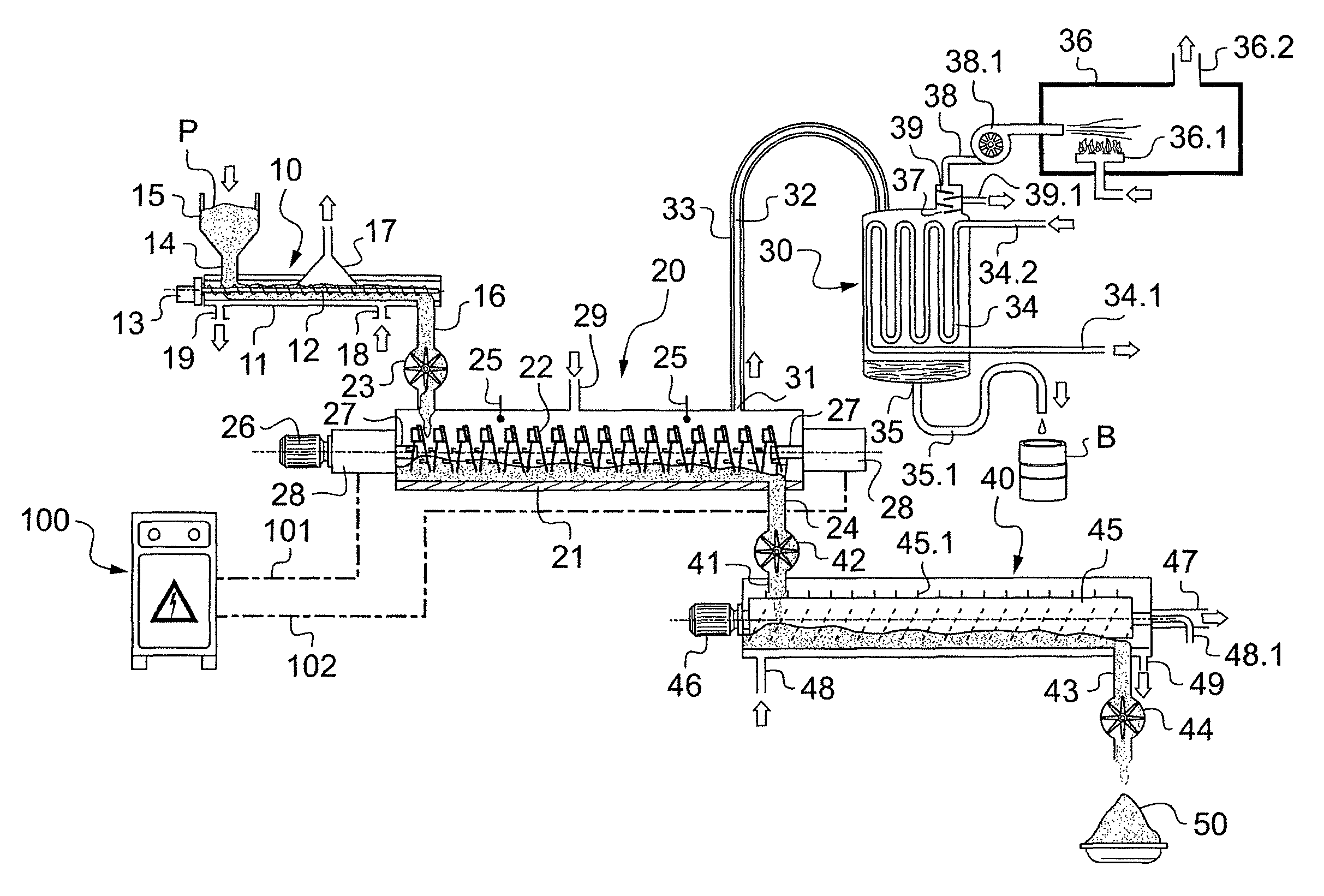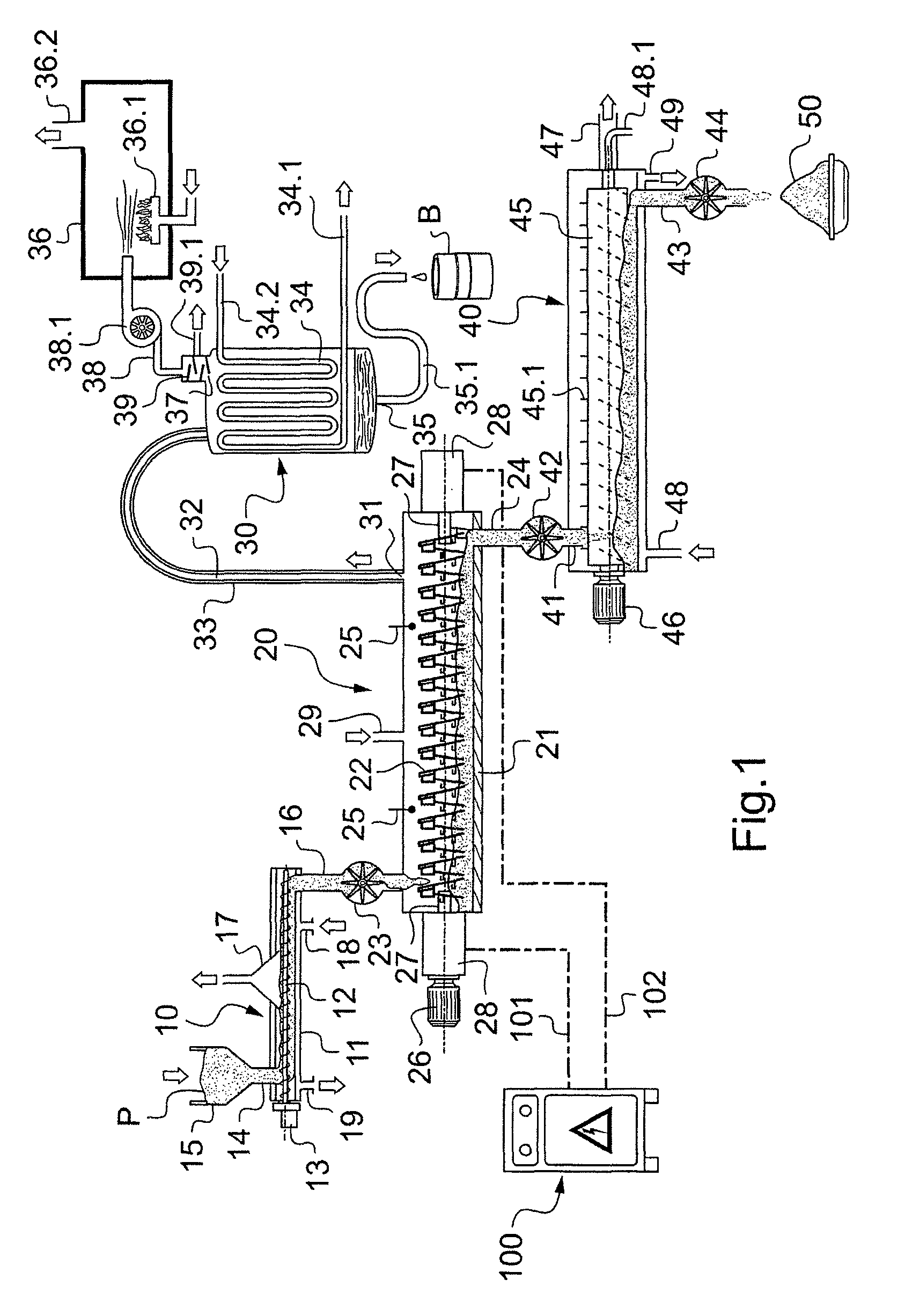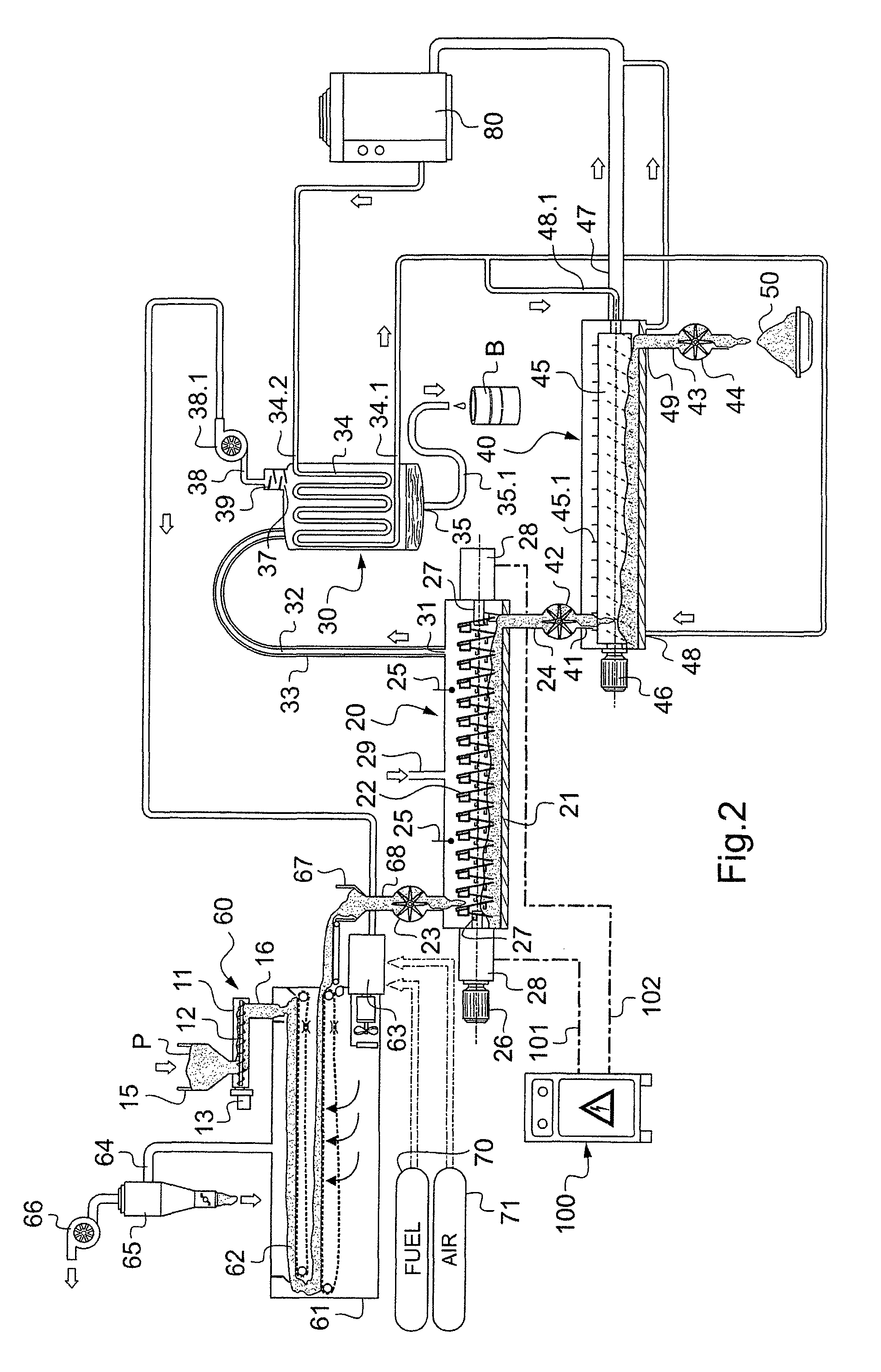Method and apparatus for the energy densification of a material in the form of divided solids, with a view to obtaining pyrolysis oils for energy purposes
a technology of energy densification and divided solids, which is applied in the production of pyroligneous acid, special form destructive distillation, biofuels, etc., can solve the problems of unsuitable treatment devices, unsuitable pyrolysis biomass pyrolysis treatment, and poor operating yield of known pyrolysis treatments, etc., to achieve high process yields
- Summary
- Abstract
- Description
- Claims
- Application Information
AI Technical Summary
Benefits of technology
Problems solved by technology
Method used
Image
Examples
Embodiment Construction
[0042]FIG. 1 is a diagram of an installation (1) for treating a material in divided solid form, in particular a biomass, with energy densification of the material in order to obtain pyrolytic oils for energy purposes.
[0043]The material in question is generally a biomass, where this term covers the biodegradable fractions of materials, wastes, and residues coming from agriculture, forestry, and related industries, and in particular biomasses of vegetable origin or solid fractions of sludge from waste water treatment, and biodegradable fractions of industrial and municipal waste. Nevertheless, the invention may be applied to treating other industrial waste that does not come within the above definition of biomass, for example polymer waste (plastics materials, rubbers, . . . ).
[0044]In general, the materials in question are divided solids that are capable of producing pyrolytic oils when they are raised to temperatures in the range 300° C. to 800° C. in the absence of oxygen, said oil...
PUM
| Property | Measurement | Unit |
|---|---|---|
| temperature | aaaaa | aaaaa |
| temperature | aaaaa | aaaaa |
| grain size | aaaaa | aaaaa |
Abstract
Description
Claims
Application Information
 Login to View More
Login to View More - R&D
- Intellectual Property
- Life Sciences
- Materials
- Tech Scout
- Unparalleled Data Quality
- Higher Quality Content
- 60% Fewer Hallucinations
Browse by: Latest US Patents, China's latest patents, Technical Efficacy Thesaurus, Application Domain, Technology Topic, Popular Technical Reports.
© 2025 PatSnap. All rights reserved.Legal|Privacy policy|Modern Slavery Act Transparency Statement|Sitemap|About US| Contact US: help@patsnap.com



